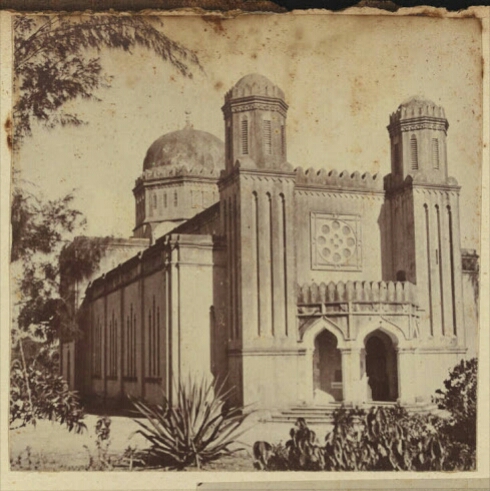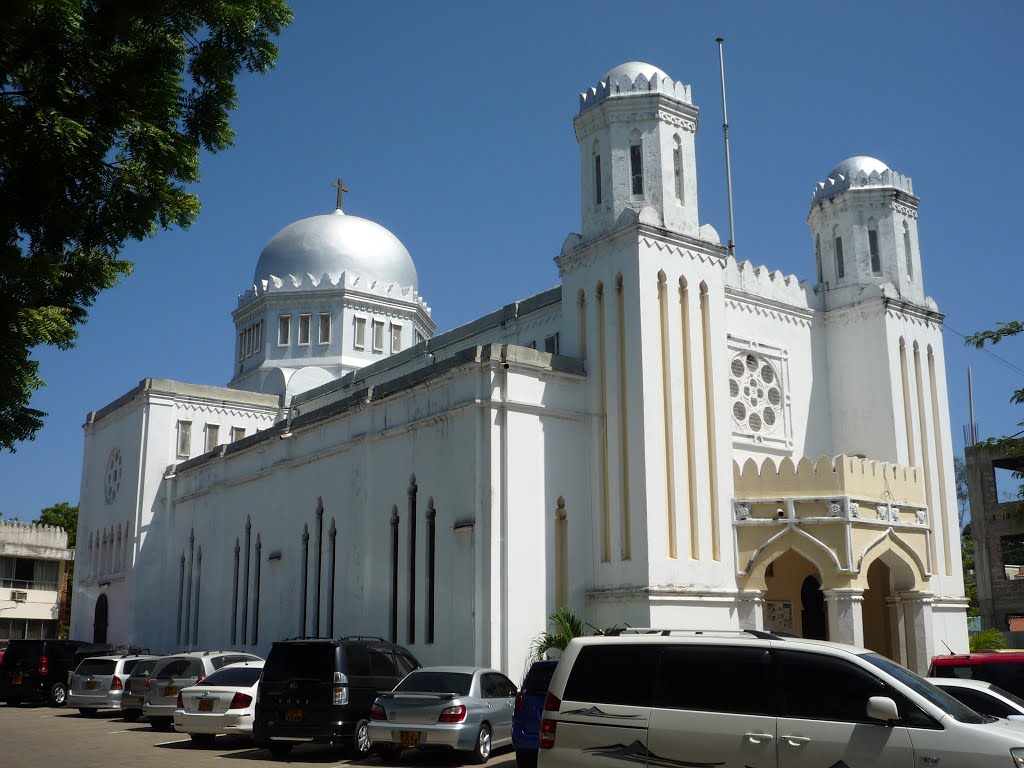Along Nkrumah Road, Mombasa, stands the ACK Mombasa Memorial Cathedral that opened its doors in 1905. It could very easily pass for a Mosque and this is the look the designer, John Houston Sinclair desired.
With the proclamation of the British East Africa Protectorate in 1895 and Mombasa picked as the capital, there was need to have a Church of England on the island following the increased English presence who needed a closer alternative to Emmanuel Church, Frere Town (est. 1875). A speech was delivered on 1st July 1895 on the occasion marking the proclamation of the British East Africa Protectorate by Sir Arthur Hardinge (Colonial Head, British East Africa Protectorate, 1895-1900) to pave way for the establishment of the Memorial Cathedral. He said, “The Mohammedan religion will remain the public established creed in the Sultan’s territory but although the Mohammedan is and remains the state religion, we intend that there shall be the fullest liberties for all others.” The speech was translated to Arabic and Swahili.
Two years later, the plans for the Cathedral were made formal with Sir Arthur Hardinge’s written response to Church Missionary Society in Frere Town putting a price on the parcel of land that was to be the proposed site for the Memorial Cathedral…“I have received your letter of the 22nd applying for a site near the Fort for an English Church and in reply, I beg to inform you that I am recommending to the Secretary of state that the CMS should be permitted to purchase the site mentioned at the rate of 30 pounds an acre.”
The land was purchased the following year on 21st March 1898, by Bishop Alfred Tucker, representing the Church of England, at a reduced rate of Rupees 1,549 and annas 11 3/4. Initial plans for the Church were drawn up in London but were deemed too costly. It therefore fell on Mr. John Houston Sinclair, who had been acting H. M. Consul – General in Zanzibar to design a cheaper alternative. Sinclair’s written memoirs reveal a modest character and also inform the reasons for the Cathedral’s mosque-like design. He states, “As soon as I was found that I had some training in architecture I was frequently asked to exercise my knowledge and during my time in Mombasa designed the Mombasa Cathedral. Not then having the experience which I have since gained while living in Tangier of the beautiful work done by Moors in Spain & Morocco. I am afraid that this is far from being a masterpiece but is perhaps, sufficiently Arabesque not to seem out of place in an old Swahili/Arab town. The marble pulpit, which I designed later, was made at Carrara, Italy.”
Mr. Sinclair later went on to do very well for himself as an architect, designing more buildings in Mombasa, Dar es Salaam & Zanzibar. Most notably in Zanzibar, where he designed the central market, law courts, National Bank of India, main post office & the Peace Memorial Museum. There was praise for Asian contributions as well. With CMS records noting, “In Mr. Bhedwar, the builder, the committee have met with a most generous, competent & conscientious man. Mr. Bhedwar, ably & willingly seconded by Mr. Sorabjee Merwanjee, has supplied his best workmen…To his 2 headmen, Amoo & Premji, very much praise is due.” Mr. Sorabjee is noted as being the builder of the Treasury buildings & the National Bank of India in Mombasa, among other principal buildings. The Asian connection with the Cathedral would continue until its doors opened.
On the day of consecration of the coral-stone Church, May 31st 1905, many Arabs, Indians & wealthy Swahilis were in attendance, their interest being the Church’s intention to introduce proper high school education. This being a great opportunity for theirs sons & daughters. Some form of high school education would go on at the Cathedral compound until 1912 when the upper class contingent of Mombasa residents got their wish…the first government school in Mombasa, the Arab School, Serani, was opened (for boys).
And what is modern religion without some controversy and politics? When the doors to the Cathedral were finally opened, an issue arose on who to honour with memorial tablets and inscriptions inside the Church. With one missionary holding nothing back. “The government officers are in the habit of collecting sums of money for the erection of memorial tablets in case of one of their number dying. Some of these men as you may suppose are not men who take any interest in religion……some in fact hardly ever put their foot inside the Church but as soon as they are dead a tablet is erected in their memory.” Talk about ‘the more things change, the more they remain the same.’




